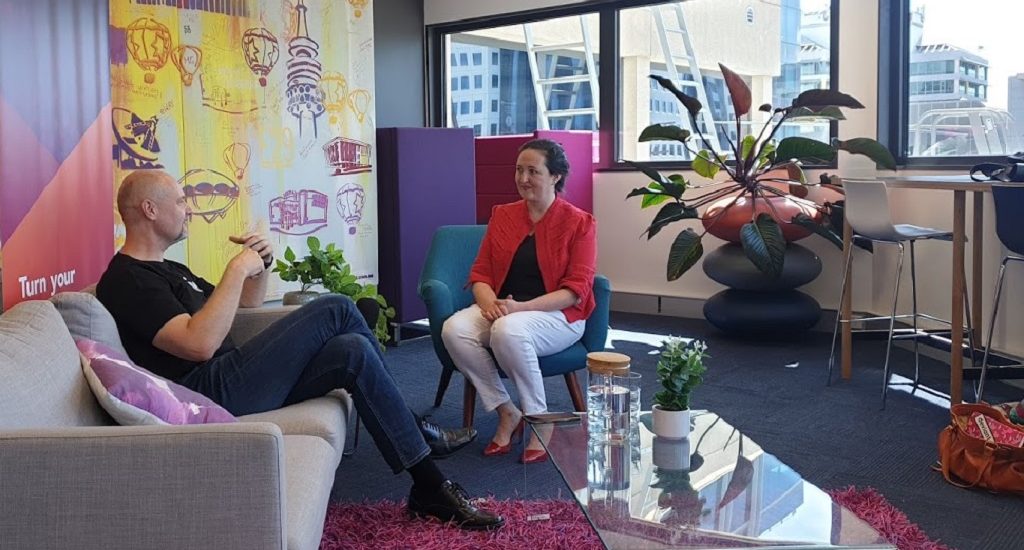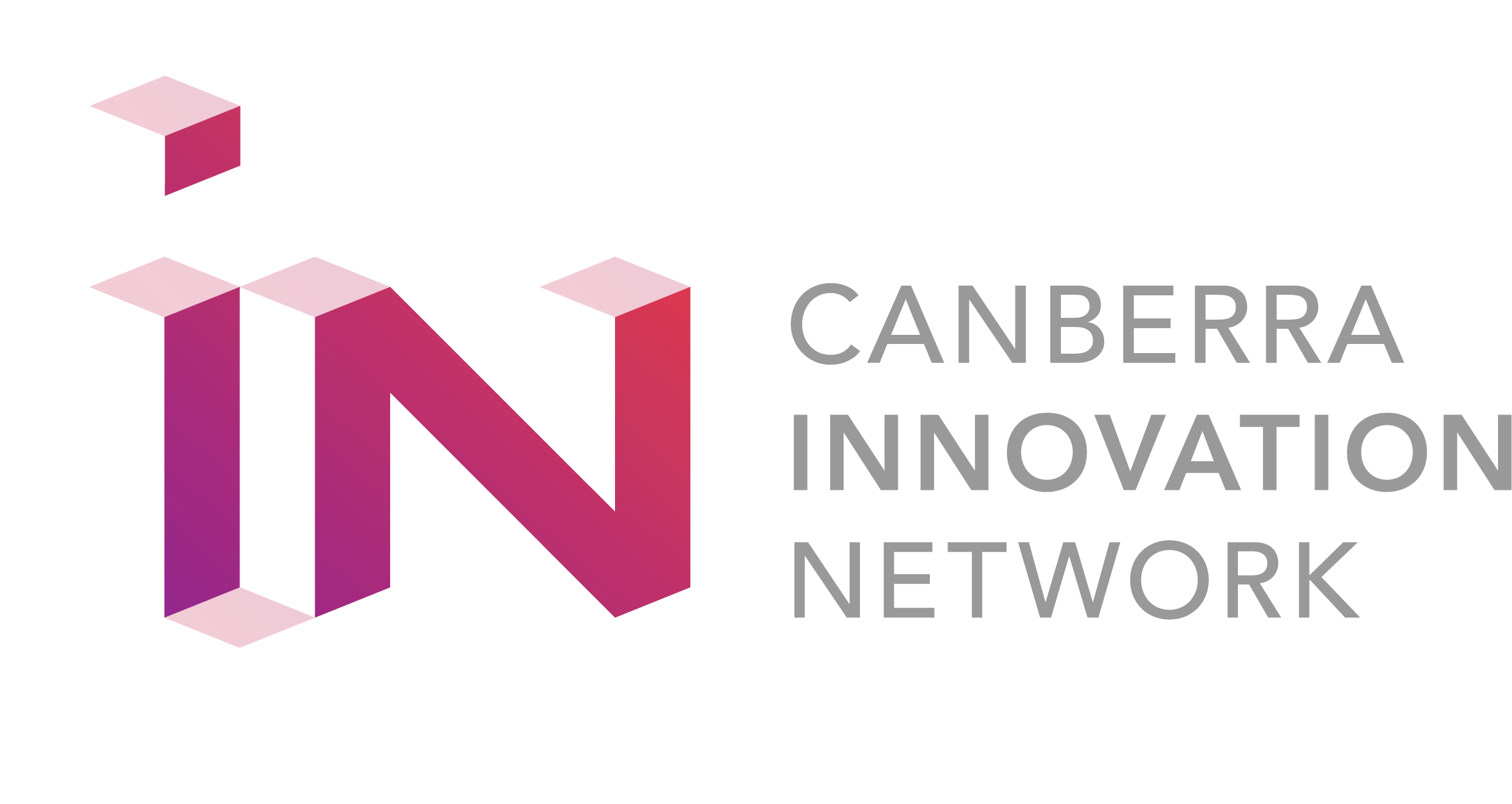- 17 September 2020
- Posted by: Canberra Innovation Network
- Category: General News

Jen Seyderhelm talks with Petr Adámek, CEO of Canberra Innovation Network for RISE Canberra.
Petr talks about the adaptability of innovation, ‘Collab Lab’s and how CBRIN is not a hidden secret, but rather ready to be discovered and utilised when the entrepreneur needs them.
Transcript
Jen Seyderhelm:
Welcome to another RISE Canberra Facebook live interview produced by Events ACT, RISE Canberra is your new home for experiencing local events. You’ll find new ways to connect with audiences and experiences made right here in the ACT by local makers, creators, artists, and businesses. You can find out more at RISEcanberra.com.
Welcome to another Facebook live interview for RISE Canberra, I’m Jen Seyderhelm and with me today is Petr Adamek who is the CEO of Canberra Innovation Network. Petr, Hello. It’s been a very busy time for you in Canberra with or without COVID. There is never a not busy time for Canberra innovation and you’ve had to adapt and pivot, and not only that you’ve had your whole building premises that’s been updated at the same time. What have you found you’ve most got out of the COVID experience in terms of Canberra and innovation?
Petr Adamek:
So the COVID experience obviously is not over yet, but the way it arrived here was quite interesting. Canberra Innovation Network is a people oriented business, we work with a lot of people, I think about 10,000 of them through the space at a Level 5, 1 Moore street per year, and we are an events business. So 290 events per year done by this team or other people in this space for entrepreneurs and innovators. So obviously when the COVID restrictions arrived, this had to change and had to change quite rapidly. So 26 March, I believe we closed this space. We had to ask the entrepreneurs to start working from home and we had to think, how can we take some of our flagship events, successful events and programs and deliver them online. I think we’ve done really well because the team here is sort of not working from a book, even when there is no pandemic and there is a lot of collaboration and adaptation to the situation. So all our programs are always evolving, so this was just a new challenge that I think we tackled quite well. So what it has given us is the confidence, I guess, that we can work from different settings and we can still support the community.
A number of things happened in March and April – We reached out to the innovation community to the entrepreneurs and asked them how they are affected by the pandemic and by the restrictions. And what is it that we can do to help them in this time? And from that survey we formulated a few recommendations to get to a broader community of people who support innovation. We did a collaborative innovation workshop online, and from it we sort of informed the government about the things that the innovators need.
Jen Seyderhelm:
Well I’ve have found, and in fact I’ve heard it articulated that the Canberra Innovation Network is kind of like a hidden secret of Canberra. But yet it’s doing so many things behind the scenes that we see the manifestations of not just for Canberra, but internationally, some of the programs that you’ve been an incubator for have gone on to international success.
My own experience with Canberra Innovation, I found that a lot of the groups that were working with you towards whatever projects they were doing had that element that they could adapt to COVID – and this was pre-COVID. And this is the beautiful thing about innovation is a lot of what you’re working with was absolutely ideally situated to be able to deal with the pandemic.
Petr Adamek:
Yeah, absolutely. So, a lot of our entrepreneurs are sort of building something that doesn’t exist yet. They see a world the way it could be, and they are kind-of trying to find a pathway to that world, build the support, prototyping, testing. And so a lot of them there, they were ready. Their delivery would it be digital, or they would be part of that process of digitizing our society or industries.
For example, in construction industry, you know, we have a company here called SignOnSite and they help construction companies and workers to be safer on the sites and they use a mobile phone device to sign you in and out. And that was successful already pre-COVID, but of course, with that rapid need of everyone to be digitally enabled, companies like that have a lot more work.
Another good example is a company called Skoolbo that is working with preschool kids and introducing them to literacy and numeracy through digital entertainment. Basically, that’s targeting these kids and again, with working from home and schooling from home their product, their services and their support was essential to help people around the world to do this and do this better.
I think as we all are learning, innovation and the innovation sector is so important because learning is embedded in everything the startup people do. Nothing is certain, they’re innovating for new futures, and it’s not known whether people will want the product that I’m about to bring to the market. So I have to embed adaptation into whatever I do, whether there’s a pandemic or not.
Jen Seyderhelm:
Yes, agree. But one of the remarkable things with innovation and particularly with some of the things that I’ve seen come up through Canberra Innovation is how seemingly they’ve almost been prepared for the pandemic with some of these ideas. One of them I remember that was put to us was the concept of having an app. So if you were going out for a day in Canberra to the various galleries, it would specifically look at your interests and it would target so you could spend specific time at various venues. So plan your day for you via an app, which I thought was a great idea. And that brings me to ‘collab lab’, because we’re in a situation right now where the hospitality industry, tourism have been decimated and you are involved in this program to help try and find ways to use innovation to reignite it.
Petr Adamek:
Yeah. So collaborative innovation is a big focus of ours apart from supporting individual entrepreneurs or companies, to be more innovative. We also work with entire industries or communities of interest or sponsors to find better ways, how to leverage innovation that’s outside of these companies or outside of these institutions – and that’s through collaborations. So ‘collab labs’ is a series of methods of work, I would say, innovation work that we apply to a number of problems. I think the COVID pandemic and the way it effects our city is a big playground for leveraging these collaborative innovation methods.
As I mentioned before, as we looked and assessed what’s needed in the time as the pandemic arrived here, we worked with the ACT Government to design a series of meetups, basically that bring together leaders from academia, government, business, and non-government sectors, entrepreneurs, and innovators, and puts them in a room in a COVID safe way or virtually, and they get a few challenges to work on and they work on these challenges as startup entrepreneurs. So they get inspired by speakers, we had one last week. The Chief Minister opened it with the ACT Government perspective on what we are learning from the pandemic, and then we had an Australasian future cities leader from ARUP give a talk about what’s changing in the landscape of cities. Then those leaders from local knowledge institutions, from businesses and from government work together to identify what could be some interesting initiatives that can get us out of this as we recover as an economy or society. Really important, is one of these ideas that came out of it is to keep doing this on a regular basis because we don’t know what the next crisis will be and for us to be more resilient and adaptive as a community, collaboration and innovation are key ingredients of getting us out of there.
We need to actually be working together more often. One of the risks of a situation like with pandemic is that we all go into our homes or into our institutions and look at how do we restructure our businesses and we forget about everyone else. We disconnect from others and a key component of what we do here in Canberra Innovation Network is supporting the network principle – the collaboration – because one plus one is always more than just two if it’s done right. And you said, we’re sort of a best kept secret, I think that’s the right thing to do because this is not about the organisation that organises the network. It’s about what happens on the network. What grows on the activity here?
Jen Seyderhelm:
Yeah, and I love that it is the Canberra Innovation ‘Network’ and you’re right, that is a key component. In this situation that we are in while so much of the innovation is digital, having that connection and being able to still meet up and discuss. For me personally, I got ways of approaching my business and I got challenged and that’s part of the process with Canberra Innovation, to think outside the box, to push myself in terms of who I was willing to approach and how I was willing to approach it, and that I couldn’t have done by myself – and that’s important as part of the network.
You’ve also been part of the Kiln Incubator and isn’t that a lovely way of describing it? The incubator is towards someone who’s come to you with an idea and helping them see it through to fruition, your role must be immensely satisfying.
Petr Adamek:
Obviously, it’s so changing. Every day is different, you meet so many interesting people who are passionate about changing the world for the better. We believe that leveraging the knowledge from our foundation members, from the institutions here in Canberra and converting it to something applicable that can maybe bring benefits to a person on the other side of the world. It’s just a wonderful job.
So everyone here in the team, but also in the broader network is excited about being able to do that on a daily basis, and challenging other people and seeing them succeed in it is part of that. So it’s a little bit like a fitness exercise, you can exercise at home by yourself and you probably can access a lot of resources online to help you do that. But there’s nothing like doing it with other people, that momentum, that social interaction that you can be part of is super important. And that’s what happens across the network. It’s what happens in our events like hackathons or even the collaborative innovation labs and the incubator or the accelerator, or even the grants program, being part of that competitive spirit of finding the best ways, how we can change the world. I think it’s super exciting.
Jen Seyderhelm:
Yeah, I do too. And homework, lots of homework – and you have to do your homework to succeed at this too. For someone who right now has an idea or fledgling business, that is something that they can see having benefits to whatever our post-COVID world looks like, what would you encourage them to do if they’re based in Canberra in terms doing something with it?
Petr Adamek:
Absolutely. So I would say my first advice would be, you will learn more by doing it then by just thinking about it. So, you will recall if you were part of our programs that our fundamental method is conversation with potential users or people who can benefit from your innovation. Do that. A lot of people are worried about, Oh will my intellectual property be infringed? (And of course, if you are doing something super secret and it depends on what you do, that you succeed, you need to take legal advice and you need to talk to the appropriate IP people.) But most of the people before they know how to do it, they have a vision about what they can achieve for the customers. It would be great if they spent more time thinking and being in the customer’s shoes so that they can design better. And I think there’s a lot of waste happening in the garages and labs when people don’t interact with customers.
So you need to get out of your comfort zone and I know you being challenged meant you had to do customer interviews and overcome that fear of rejection. And rather than say “what if you could use this product?”, say “what is your problem? And tell me about it in your own words”, and what’s the evidence you can provide me that you are actually trying to solve that problem. I think that’s my number one, advice.
The other one is surround yourself with a community that can help. You can use Canberra Innovation Network or any other parts of the network. We have centre for entrepreneurial agri-tech (CEAT), so if you have something in the ag space or food space, go to them, that’s part of ANU and CSIRO or come through the Canberra Innovation Network and we will direct you. If you have something that’s more about social impact or cultural environmental impact, the Mill House Ventures, that’s part of University of Canberra and ServiceOne, we can refer you to them, but there’s a number of places and groups of people that can help you, so I would suggest you do that.
Jen Seyderhelm:
Well, I loved having a chat with you today, Petr, and for anyone who’s looking towards something in the innovation space, there is an incredible community and network – network’s a better word for it – that you can interact with here in the ACT. That’s another RISE Canberra Facebook live interview I’m Jen Seyderhelm and Petr Adamek is the CEO of Canberra Innovation Network.
END

